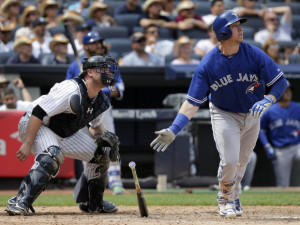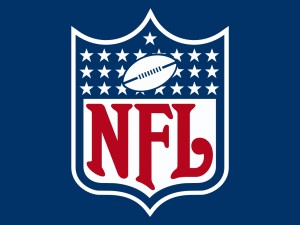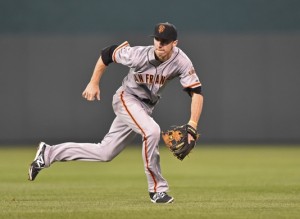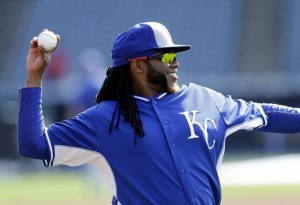The Toronto Blue Jays, bonkers trade deadline performance and all, still entered last weekend down 4.5 games to the AL East-leading Yankees. But they had the chance to change that, with three games in the Bronx starting Friday. And change that they did.
Friday saw a well-pitched game head into extra innings; starters R.A. Dickey and Nathan Eovaldi allowed one run each over seven and six and a third innings, respectively. After nine, Yankees manager Joe Girardi turned to rookie reliever Branden Pinder, and Pinder rewarded his manager’s loyalty by promptly serving up a solo jack to Jose Bautista. Toronto won. 3.5 back.
Saturday marked the second start in the Blue Jays career of David Price, acquired from the Tigers at the trade deadline. He would be facing Ivan Nova, who had been dealing with arm fatigue in recent weeks. The game was scoreless, until the sixth inning, that is, when Justin Smoak belted a grand slam to break the tie.
Two more Blue Jay runs would be added over the course of as many innnings, Price would pitch seven shutout innings, and the Blue Jays would win again. 2.5 back.
Sunday presented an opportunity for the Yankees to get some of their lead back, with consistent #2 pitcher Masahiro Tanaka hitting the mound. The Blue Jays sent Marco Estrada to the hill. Tanaka was plenty good enough to win, only allowing two runs on home runs to Bautista and Josh Donaldson. But Estrada was better, going six and a third scoreless innings. The combination of LaTroy Hawkins, Aaron Sanchez, and Roberto Osuna would not allow a hit the rest of the way, and the Blue Jays completed the weekend sweep. 1.5 back.
Sunday afternoon’s game also featured this piece of abject stupidity, but whatever:
So the AL East looks drastically different today, the complexion of it flipped upside down. One would assume.
While the Jays have trailed in the division for the majority of this season, numbers, and particularly win-loss records, can be very misleading.
This season, the team north of the border has had the best run differential in Major League Baseball, at +129. That figure is even better than the one posted by baseball’s best squad, the St. Louis Cardinals. The Cards are 71-40. The Jays are 61-52. Why? One-run games.
While their run differential has been outstanding, their record in games decided by one run has been atrocious. At 12-23, they have the second worst record in the sport in these games. Something called expected win-loss record says the Blue Jays should have been 69-44, given their run differential. That record would be second best in baseball, only behind St. Louis. But their performance in one-run games has left them playing catch-up all year.
So what do we chalk the Blue Jays’ tough losses to this season? Straight, dumb luck. The New York Times‘ Victor Mather explains:
Fans are often suspicious of such teams, contending that they lack “heart” or “clutchiness.” But records in one-run games are largely a matter of luck. Teams that fare poorly in close games are just as likely to fare well in them in the future. Teams that do well in blowouts are just good teams, period.
(There is a team worse than the Jays in one-run games this year: The Oakland A’s are 13-26. Though Oakland is an afterthought this season at 51-62, it has a respectable plus-35 run differential, better than the Rays, Rangers and Twins, all of whom are around .500.)
In their 11-1 run, the Jays have outscored their foes by 67-32, and their run differential now stands at 597 to 468, or plus 129, dwarfing the next best team in the league, the Astros, who are plus 78. The Yankees, who still lead the Jays by a game and a half, are plus 61.Though they cannot match the Jays, the Yankees are having a much improved season in run differential. Over the last two seasons opponents outscored the Yankees. In 2014, the Yanks were 84-78 while posting a minus 31. In 2013, they were 85-77 and minus 21.
Manager Joe Girardi got a lot of credit for keeping an apparently underwhelming team in contention. Most notably, he managed the team to a 30-16 record in one-run games in 2013. But no such magic is needed this season; the Yankees have the numbers to back up their record.
For every team like the Jays whose true abilities were hidden by a poor record, there is a team that fashions a fine record despite a mediocre run differential.
This is exactly the point I’m trying to articulate: the Blue Jays’ “resurgence” really isn’t one; all there is to their recent success is their performing to their potential… and the trades they made.
At the time of Troy Tulowitzki’s first game with the team, Toronto was a mediocre 50-51. They won their next two games, and on July 30, pulled their second blockbuster trade of the week, picking up David Price. Today, they’re 61-52, and with the offense humming as usual and the rotation bolstered, the Jays are looking very, very dangerous.
And here’s the thing: Tulo hasn’t played that well for Toronto. The career .298 hitter has batted just .244 for the Jays, albeit in a scarce 53 plate appearances; this shouldn’t be anything to worry about. However, his addition has helped the other batters in Toronto’s ridiculous batting order, and this is partially the reason why the trade for him has been successful. And Price, in just two starts, has allowed exactly one earned run and helped a pitching staff in desperate need of support. He wasn’t a bad acquisition, either.
So what does all of this mean for the Yankees? Jacob Shafer at Bleacher Report wrote about that yesterday:
Well, now it’s three games, but the point is taken. The Yankees, however, need to regroup in a hurry.
Beginning Tuesday, they embark on a six-game road trip that begins with a three-game series against the Cleveland Indians and concludes with a trio of contests north of the border against these same Blue Jays.
If Toronto sweeps, or even wins, that series, it’s probable we’ll have a new leader in the AL East. And the two clubs will meet for four more in New York beginning Sept. 10.
Any Yankees turnaround will begin with the offense, which ranks second in MLB in runs scored (yes, they trail Toronto).
But the starting rotation, which owns an ERA of 4.31, needs to pick up the slack. To that end, how huge would it have been for New York to grab Price from the Detroit Tigers at the deadline, adding him to its arsenal and keeping the stud southpaw away from Toronto?
So this is the one important question: are the Blue Jays the favorites in the AL East?
At this point in the season, I’d have to say yes. They have enough pitching now, and when it gets combined with that crazy lineup of theirs, the Toronto Blue Jays may just be the scariest team in the American League. They could make a deep run in October, and it is just about assured that their 22-year playoff drought is about to end.
But one thing is clear: their emergence shouldn’t be a surprise.




